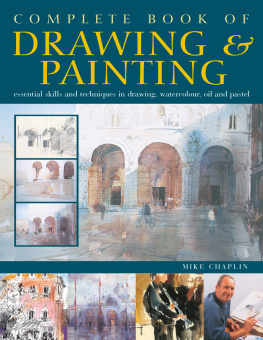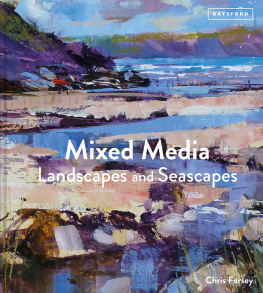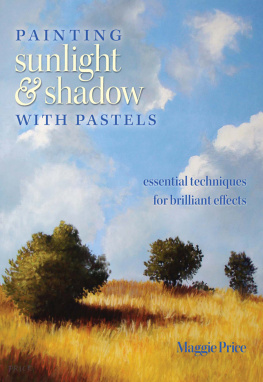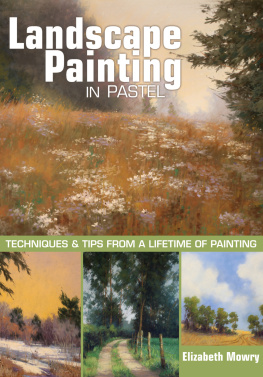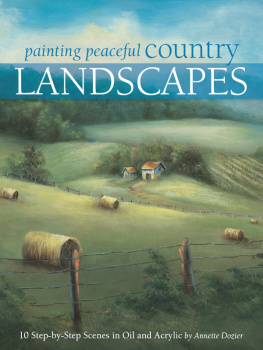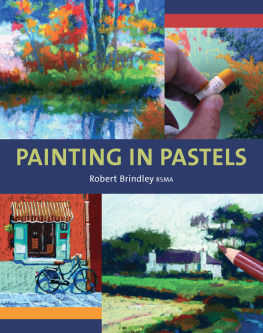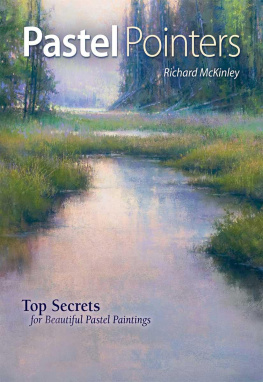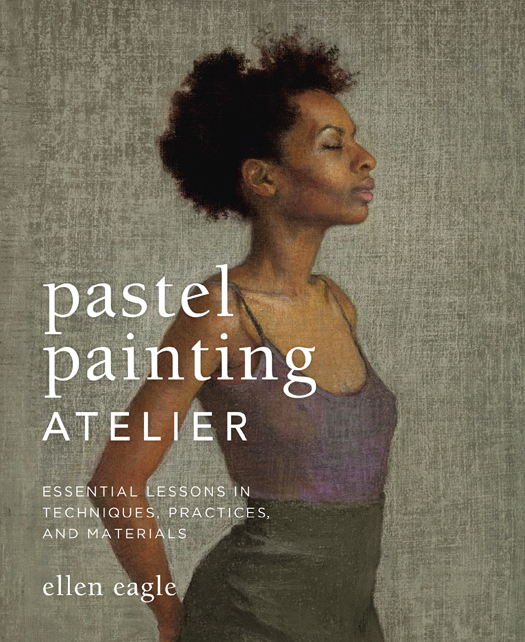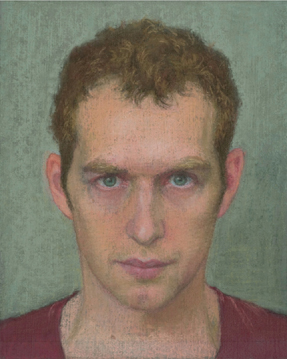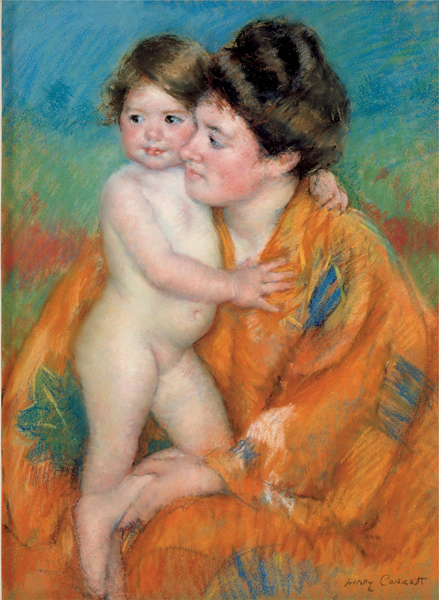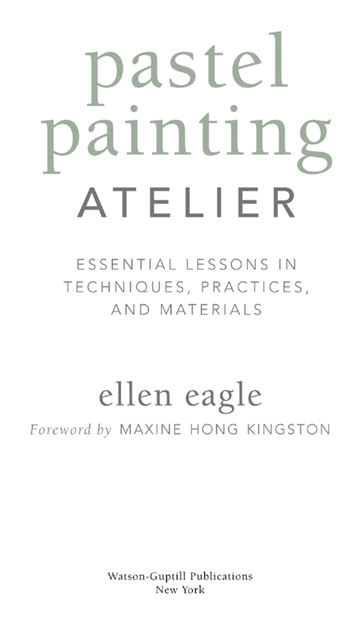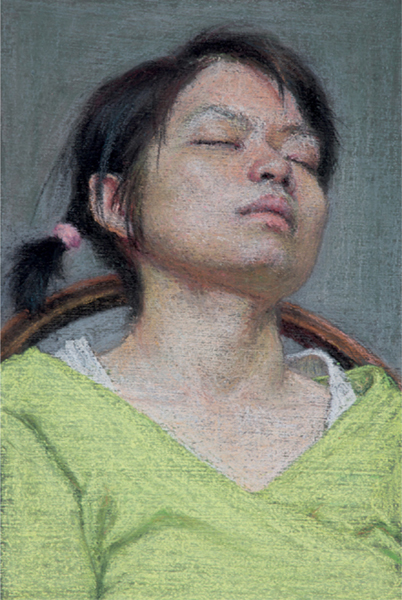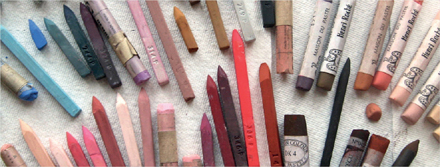
Copyright 2013 by Ellen Eagle
All rights reserved.
Published in the United States by Watson-Guptill Publications, an imprint of the Crown Publishing Group, a division of Random House, Inc., New York.
www.crownpublishing.com
www.watsonguptill.com
WATSON-GUPTILL and the WG and Horse designs are registered trademarks of Random House, Inc.
Library of Congress Cataloging-in-Publication Data
Eagle, Ellen.
Pastel painting atelier : essential lessons in techniques, practices, and materials / Ellen Eagle. First Edition.
1. Pastel paintingTechnique. I. Title.
NC880.E23 2013
741.235dc23
2012018761
eBook ISBN: 978-0-8230-0842-1
Hardcover ISBN: 978-0-8230-0841-4
Book design by Karla Baker
Jacket design by Karla Baker
Jacket art: Ellen Eagle
Ellen Eagle, Anastasio , 2010, pastel on pumice board, 8 6 inches (21.3 17.1 cm)
This is the first portrait I did of Anastasio. I selected the very close, frontal gaze because of his sharply intelligent observations.
Mary Cassatt (American [active in France], 18441926), Woman with Baby , c. 1902, pastel on gray paper, 28 20 inches (72.1 53 cm), collection of The Sterling and Francine Clark Art Institute, Williamstown, Massachusetts. Gift of the Executors of Governor Lehmans Estate and the Edith and Herbert Lehman Foundation, 1968.301
PHOTO CREDIT: MICHAEL AGEE
Cassatt was a superb draftswoman, yet she did not hesitate to break through her fine drawing lines with vigorous strokes of pastel, and often left some areas of her paintings less finished than others.
John Appleton Brown, Old Fashioned Garden , circa 1889, pastel on paperboard, 211516 18 inches (55.7 cm 43.7 cm), collection of Bowdoin College Museum of Art. Bequest of Miss Mary Sophia Walker, Ac.1904.24
Notice the variety of strokes within this painting. They create a multitude of textures, and a depth of space. As do many of Browns pastels, this image features a buoyant, dance-like composition created by the play of light on distinct forms.
v3.1
TO MY PARENTS, ROSLYN AND ARTURO T., MY BROTHER, DAVID, AND MY HUSBAND, GORDON
I would like to thank the following people and institutions for their generous contributions:
My brilliant editor, Alison Hagge, for her expansive vision and sensitivity. Senior editor Leila Porteous and editorial assistant Lisa Buch for their exceptional insights, attention, and support. Executive Editor Candace Raney, for inviting me to write this book. Maxine Hong Kingston for her genuine and sensitive foreword. Marjorie Shelley, Sherman Fairchild conservator in charge, Paper Conservation, and Katherine Baetjer, curator, European Paintings, both at the Metropolitan Museum of Art, New York, for the multiple conversations they granted me about the history and conservation of the medium. Katie Steiner, assistant curator, the Frick Collection, New York, for the private viewing of Whistlers The Cemetery: Venice. Neil Jeffares, author of Dictionary of Pastellists before 1800 , for his encyclopedic book, and his help in seeking permissions for reproductions. I extend my gratitude to Jacklyn Burns, registrar, J. Paul Getty Museum, Los Angeles; Michelle Henning, Bowdoin College Museum of Art; Mila Waldman and Stephen Fisher, the Mead Art Museum at Amherst College; Susan Grinois, Fine Arts Museums of San Francisco; Kathryn Kearns, Smith College Museum of Art; Rachel Beaupr, Mount Holyoke College Art Museum; Teresa OToole, Sterling and Francine Clark Art Institute, for granting me reproduction permissions. Assistant director and reference librarian Helen Beckert, the Glen Ridge Public Library, for helping me to access JStor for writings about Chardin. Dominique Sennelier and Pierre Guidetti of Savoire-Faire, Bernadette Ward of PanPastel, and Isabelle Roch and Margaret Zayer of La Maison du Pastel Henri Roch for samples to familiarize myself with their beautiful products. Eve and Jeff Friedlander of MTS Frames, New Jersey, for clarifying framing considerations. I want to thank my friend and gifted pastel maker Susan McMurray, Santa Fe, New Mexico, for her fossilized pine cone of blue pigment and her hand-made pastels. Barbara Holton, Joan Heckerling, Nora Cohen, and Lisa DeStilo for their support and so much more. My photographer Peter Jacobs, for his top-quality images of my work over the years, and his exhaustive help in formatting and organizing my images for this book. Teachers Daniel Greene, Dan Gheno, Mary Beth McKenzie, and Michael Burban for their inspiring classes. I want to thank my magnificent friends and professional models who have allowed me to look at them for hours and paint my impressions. I thank my greatest teacher, Harvey Dinnerstein, and my wonderful students. I learn your lessons every day.
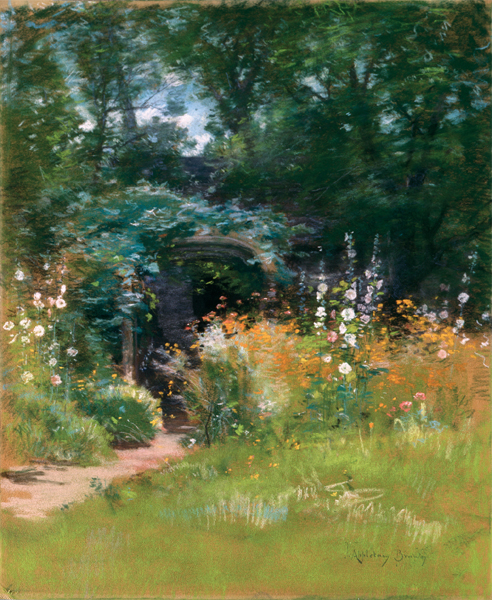
CONTENTS
CHAPTER ONE
basic materials
CHAPTER TWO
advanced studio practices
CHAPTER THREE
a look at the genres
CHAPTER FOUR
the working process
CHAPTER FIVE
on my easel
CHAPTER SIX
display and handling
foreword
by MAXINE HONG KINGSTON
I met Ellen Eagle the summer we taught at Art Workshop International in Assisi, Italy, she a course in drawing with pastels, and I a course in writing the novel. Beauty surrounded us, held us. From our rooms and studios, from the terrace where we ate our meals, we looked down upon the Umbrian plain and the city of Saint Francis. Day and night, bells rang the time.
Ellen gave a slide show of her portraits. One by one, people filled the screen: Mei-Chiao. April. Asha. Phyllis. Lee. Alfredo. Edwin. Mike. Ellen herself. Her mother and her father. I could feel each persons weight, his or her individual energy and beauty. A pull of affection rushed from my heart toward each one of them; it must have been the affection the artist felt when she painted them. I wanted to be beheld the way Ellen beheld these lucky people. Amid the crowd thanking her for the show, I blurted out, I want you to paint me. At the same moment, she was saying, I want to paint you.
Ellen Eagle, Mei-Chiao Resting , 2010, pastel on pumice board, 5 3 inches (14.5 9.8 cm)
And so, I sat for Ellen Eagle. The painting took two years. She flew to California three times, and I flew to New Jersey once. But she did not paint me in her studio; we did not work on the portrait on the East Coast. The light had to be the light coming into my dining room, which is like a sunporch, with a bank of windows facing south. Ellen had found just the right light for me, my medium, the light that has shone on me for most of my life.


